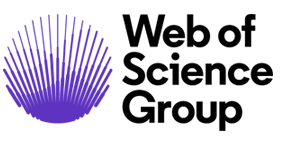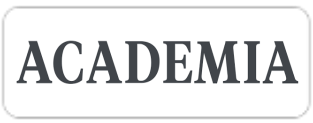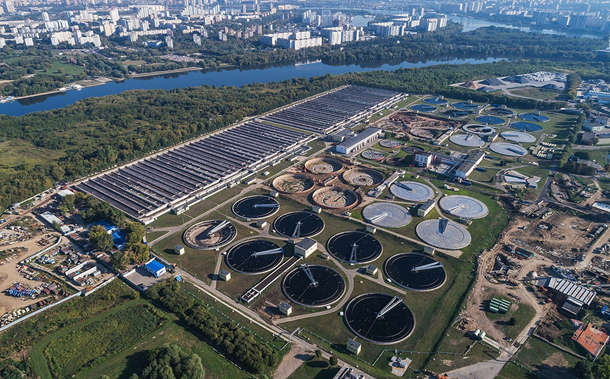Heterogeneity based Mode Choice Behaviour for Introduction of Sustainable Intermediate Public Transport (IPT) Modes
Downloads
Doi:10.28991/CEJ-2022-08-03-09
Full Text:PDF
Downloads
[2] Sinha, S., Sadhukhan, S., Kumar, S., Bandhyopadhyaya, R., & Shrivastava, R. (2017). User's assessment of Auto Rickshaw: A Paratransit mode for mid-sized city in India. 12th International Conference of Eastern Asia Society for Transportation Studies, Ho-Chi Minh City, Vietnam.
[3] Sivaraman, M. (2015). Intermediate Para-Transit (IPT) systems: A case of private players in a sector of government monopoly. In Centre for Public Policy Research. Centre for Public Policy Research. Available online: https://www.cppr.in/wp-content/uploads/2015/01/Intermediate-Para-Transit-Study.pdf (accessed on January 2022).
[4] Mani, A., Pai, M., & Aggarwal, R. (2012). Sustainable urban transport policy in India focus on autorickshaw sector. Transportation Research Record, 2317, 104–110. doi:10.3141/2317-13.
[5] Balya, M. I., & Kumar, R. (2017). Walking Feeder Mode Services Choice Analysis for Integration of Bus Rapid Transit System: a Case Study. International Journal for Traffic and Transport Engineering, 7(4), 487–497. doi:10.7708/ijtte.2017.7(4).07.
[6] Shimazaki, T., & Rahman, M. (1996). Physical characteristics of paratransit in developing countries of Asia. Journal of Advanced Transportation, 30(2), 5–24. doi:10.1002/atr.5670300203.
[7] Priye, S., & Manoj, M. (2020). Exploring usage patterns and safety perceptions of the users of electric three-wheeled paratransit in Patna, India. Case Studies on Transport Policy, 8(1), 39–48. doi:10.1016/j.cstp.2020.01.001.
[8] Hilling, D. (2003). Transport and Developing Countries. Transport and Developing Countries. Taylor & Francis. doi:10.4324/9780203436936.
[9] Ansari, M. W., & Sinha, S. (2020). Comparative assessment of service quality of IPT modes in Urban India. Civil Engineering and Architecture, 8(6), 1436–1450. doi:10.13189/cea.2020.080626.
[10] Kumar, S., & Sinha, S. (2021). Willingness to pay for improvement in service quality of intermediate public transport (IPT) modes. Civil Engineering Journal, 7(5), 866–879. doi:10.28991/cej-2021-03091696.
[11] Ponodath, D. S., George, K., & Jacob, G. S. (2018). An Assessment of the Intermediate Public Transport ( IPT ) Sector in India An Assessment of the Intermediate Public Transport ( IPT ) Sector India Centre for Public Policy Research lic Policy Research (Issue August). Centre for Public Policy Research, Kerala India. Available online: https://www.cppr.in/wp-content/uploads/CPPR_An-Assessment-of-the-Intermediate-Public-Transport-IPT-Sector-in-India.pdf (accessed on Jan. 2021).
[12] Bachok, S., & Zin, S. H. M. M. (2017). Feeder mode choice selection behavioural modelling: The case of KTM Komuter, Kuala Lumpur. Planning Malaysia, 15(1), 65–80. doi:10.21837/pmjournal.v15.i6.223.
[13] Das, S. S., Maitra, B., & Boltze, M. (2012). Planning of fixed-route fixed-schedule feeder service to bus stops in rural India. Journal of Transportation Engineering, 138(10), 1274–1281. doi:10.1061/(ASCE)TE.1943-5436.0000419.
[14] Balya, M. I., & Kumar, R. (2017). Feeder mode choice analysis for public bus transit system: A case study. World Review of Intermodal Transportation Research, 6(3), 177–192. doi:10.1504/WRITR.2017.086233.
[15] Zhu, Z., Guo, X., Zeng, J., & Zhang, S. (2017). Route Design Model of Feeder Bus Service for Urban Rail Transit Stations. In Mathematical Problems in Engineering, Vol. 2017. doi:10.1155/2017/1090457.
[16] Chandra, S., Bari, M. E., Devarasetty, P. C., & Vadali, S. (2013). Accessibility evaluations of feeder transit services. Transportation Research Part A: Policy and Practice, 52, 47–63. doi:10.1016/j.tra.2013.05.001.
[17] Sekhar Das, S., & Maitra, B. (2019). Two-stage choice-based demand model for rural feeder service to the bus stop. Transportmetrica A: Transport Science, 15(2), 573–585. doi:10.1080/23249935.2018.1517134.
[18] Tabassum, S., Tanaka, S., Nakamura, F., & Ryo, A. (2017). Feeder Network Design for Mass Transit System in Developing Countries (Case study of Lahore, Pakistan). Transportation Research Procedia, 25, 3129–3146. doi:10.1016/j.trpro.2017.05.343.
[19] Verma, A., & Dhingra, S. L. (2006). Developing Integrated Schedules for Urban Rail and Feeder Bus Operation. Journal of Urban Planning and Development, 132(3), 138–146. doi:10.1061/(asce)0733-9488(2006)132:3(138).
[20] Shanmugam, L., & Ramasamy, M. (2021). Study on mode choice using nested logit models in travel towards Chennai metropolitan city. Journal of Ambient Intelligence and Humanized Computing. doi:10.1007/s12652-020-02868-1.
[21] Sadhukhan, S., Banerjee, U. K., & Maitra, B. (2016). Commuters' willingness-to-pay for improvement of transfer facilities in and around metro stations – A case study in Kolkata. Transportation Research Part A: Policy and Practice, 92, 43–58. doi:10.1016/j.tra.2016.07.004.
[22] Dandapat, S., & Maitra, B. (2020). Preference heterogeneity in trip makers' perception and policy Issues: A study with reference to bus services in Kolkata. Case Studies on Transport Policy, 8(4), 1504–1517. doi:10.1016/j.cstp.2020.11.001.
[23] Hensher, D. A., Rose, J. M., & Greene, W. H. (2005). Applied choice analysis: A primer. In Applied Choice Analysis: A Primer. Cambridge University Press. doi:10.1017/CBO9780511610356.
[24] Chintakayala, P. K., & Maitra, B. (2010). Modeling Generalized Cost of Travel and Its Application for Improvement of Taxies in Kolkata. Journal of Urban Planning and Development, 136(1), 42–49. doi:10.1061/(asce)0733-9488(2010)136:1(42).
[25] Shahikhaneh, A., Azari, K. A., & Aghayan, I. (2020). Modeling the Transport Mode Choice Behavior of Motorcyclists. Iranian Journal of Science and Technology - Transactions of Civil Engineering, 44(1), 175–184. doi:10.1007/s40996-019-00236-4.
[26] Meena, S., Patil, G. R., & Mondal, A. (2019). Understanding mode choice decisions for shopping mall trips in metro cities of developing countries. Transportation Research Part F: Traffic Psychology and Behaviour, 64, 133–146. doi:10.1016/j.trf.2019.05.002.
[27] Givoni, M., & Rietveld, P. (2007). The access journey to the railway station and its role in passengers' satisfaction with rail travel. Transport Policy, 14(5), 357–365. doi:10.1016/j.tranpol.2007.04.004.
[28] Azimi, G., Rahimi, A., Lee, M., & Jin, X. (2021). Mode choice behavior for access and egress connection to transit services. International Journal of Transportation Science and Technology, 10(2), 136–155. doi:10.1016/j.ijtst.2020.11.004.
[29] Hensher, D. A., & Rose, J. M. (2007). Development of commuter and non-commuter mode choice models for the assessment of new public transport infrastructure projects: A case study. Transportation Research Part A: Policy and Practice, 41(5), 428–443. doi:10.1016/j.tra.2006.09.006.
[30] Weng, J., Tu, Q., Yuan, R., Lin, P., & Chen, Z. (2018). Modeling Mode Choice Behaviors for Public Transport Commuters in Beijing. Journal of Urban Planning and Development, 144(3), 05018013. doi:10.1061/(asce)up.1943-5444.0000459.
[31] Zhou, F., Zheng, Z., Whitehead, J., Washington, S., Perrons, R. K., & Page, L. (2020). Preference heterogeneity in mode choice for car-sharing and shared automated vehicles. Transportation Research Part A: Policy and Practice, 132(December 2019), 633–650. doi:10.1016/j.tra.2019.12.004.
[32] Dell'Olio, L., Ibeas, A., Cecín, P., & dell'Olio, F. (2011). Willingness to pay for improving service quality in a multimodal area. Transportation Research Part C: Emerging Technologies, 19(6), 1060–1070. doi:10.1016/j.trc.2011.06.004.
[33] Greene, W. H., Hensher, D. A., & Rose, J. (2006). Accounting for heterogeneity in the variance of unobserved effects in mixed logit models. Transportation Research Part B: Methodological, 40(1), 75–92. doi:10.1016/j.trb.2005.01.005.
[34] Phanikumar, C. V., & Maitra, B. (2007). Willingness-to-pay and preference heterogeneity for rural bus attributes. Journal of Transportation Engineering, 133(1), 62–69. doi:10.1061/(ASCE)0733-947X(2007)133:1(62).
[35] Israel Schwarzlose, A. A., Mjelde, J. W., Dudensing, R. M., Jin, Y., Cherrington, L. K., & Chen, J. (2014). Willingness to pay for public transportation options for improving the quality of life of the rural elderly. Transportation Research Part A: Policy and Practice, 61(2014), 1–14. doi:10.1016/j.tra.2013.12.009.
[36] Satishkumar, B., Maitra, B., & Das, S. S. (2018). Temporal shift in willingness-to-pay for rural feeder service to bus stop. Travel Behaviour and Society, 12(July 2017), 102–107. doi:10.1016/j.tbs.2018.02.004.
[37] Das, S. S., Maitra, B., & Boltze, M. (2009). Valuing travel attributes of rural feeder service to bus stop: Comparison of different logit model specifications. Journal of Transportation Engineering, 135(6), 330–337. doi:10.1061/(ASCE)0733-947X(2009)135:6(330).
[38] Majumdar, B. B., & Mitra, S. (2017). Valuing Factors Influencing Bicycle Route Choice Using a Stated-Preference Survey. In Journal of Urban Planning and Development (Vol. 143, Issue 3, p. 04017001). doi:10.1061/(asce)up.1943-5444.0000380.
[39] Maitra, B., Ghosh, S., Das, S. S., & Boltze, M. (2013). Effect of model specification on valuation of travel attributes: a case study of rural feeder service to bus stop. Journal of Transport Literature, 7(2), 8–28. doi:10.1590/s2238-10312013000200002.
[40] Balakrishnan, S., & Karuppanagounder, K. (2021). Accommodating the Heterogeneity in Traveller's Responsiveness in Safe Route Choice Experiment-Study from India. European Transport/Trasporti Europei, 81(81), 1–16. doi:10.48295/et.2021.81.10.
[41] National Institute of Technology Patna. (2018). Comprehensive Mobility Plan, Patna, India. Available online: http://www.nitp.ac.in/uploads/EOI-CMP5a82b8d7f1a04.docx (accessed on December 2021).
[42] UDHD. (2016). Patna Master Plan 2031, Town and Country Planning Organization. Urban Development & Housing Department Patna, Bihar, India. Available online: http://udhd.bihar.gov.in/PMP2031/data/pmp-2031-report.pdf (accessed on January 2022).
[43] Mahadevia, D., & Advani, D. (2016). Gender differentials in travel pattern – The case of a mid-sized city, Rajkot, India. Transportation Research Part D: Transport and Environment, 44, 292–302. doi:10.1016/j.trd.2016.01.002.
[44] Patna Road Map. (2021). Available online: https://www.mapsofindia.com/ (accessed on December 2021).
[45] Hazra, T., Goel, S., & Maitra, B. (2013). Willingness-to-pay for solid waste management service attributes: Kolkata Municipal Corporation area, India, as a case study. International Journal of Environment and Waste Management, 12(4), 406–421. doi:10.1504/IJEWM.2013.056627.
[46] Hensher, D. A., & Greene, W. H. (2003). The mixed logit model: the state of practice. Transportation, 30(2), 133-176. doi:10.1023/A:1022558715350.
[47] Louviere, J. J., Hensher, D. A., Swait, J. D., & Adamowicz, W. (2000). Stated Choice Methods: Analysis and Applications. Cambridge University Press, Cambridge, United Kingdom. doi:10.1017/cbo9780511753831
[48] Greene, W. H. (2010). NLOGIT Version 4.0 - Student Reference Guide, Econometric Software, Inc. New York City, United States.
- Authors retain all copyrights. It is noticeable that authors will not be forced to sign any copyright transfer agreements.
- This work (including HTML and PDF Files) is licensed under a Creative Commons Attribution 4.0 International License.![]()














